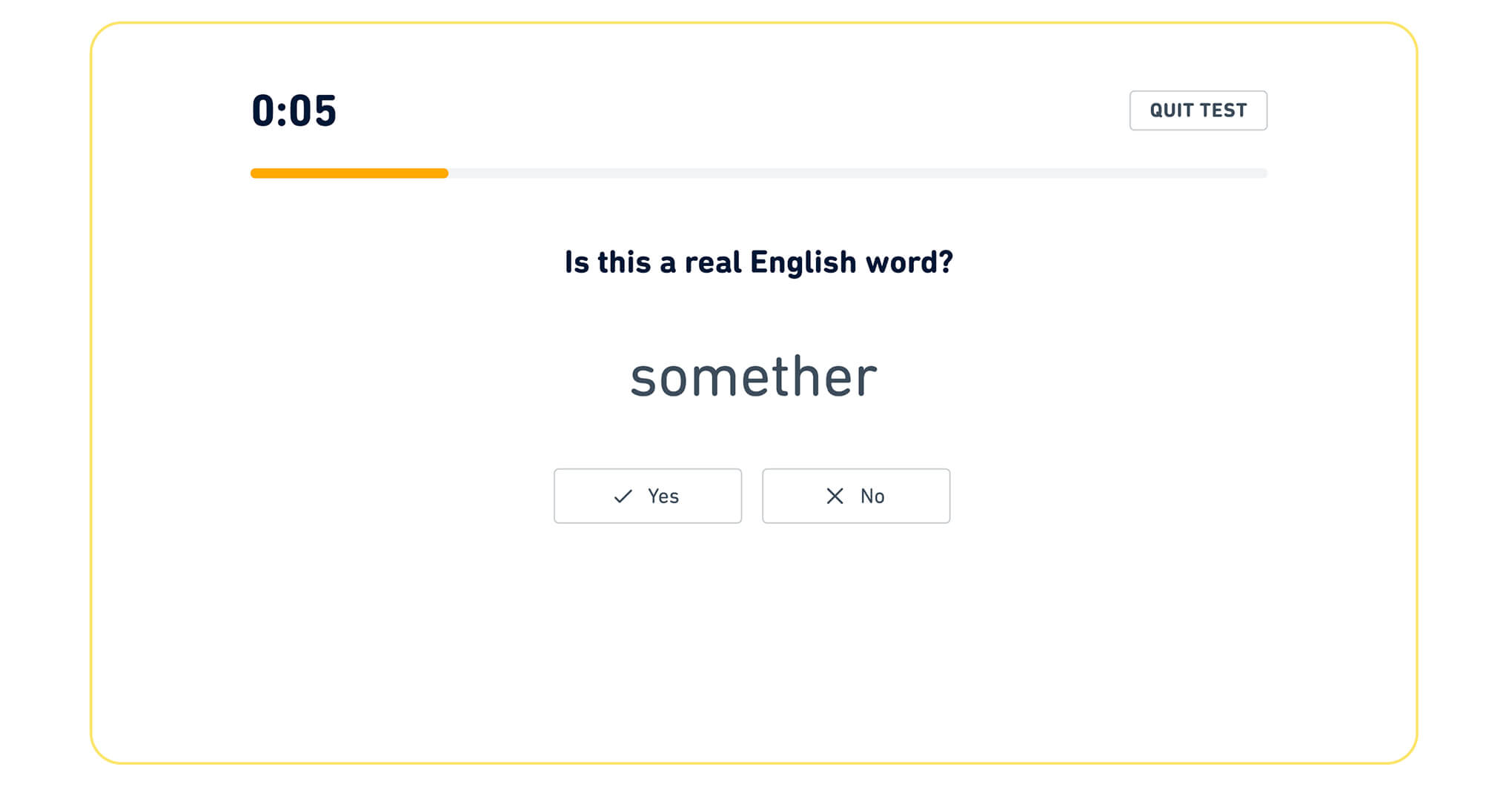Introduction
The Duolingo English Test (DET) currently includes at least fourteen different question types, and the first one you will see on test day is the Read and Select question. It is super simple.
You are presented with a word and you have 5 seconds to determine whether it is a real or a fake word.
Just 5 seconds?!
Even though the time is short, there are a couple of tricks you can use to help you identify whether the word is real or fake and we are going to take a closer look at them right now.
By the end of this short article, you will know the tips and tricks for Read and Select questions and understand how to practice at home in a way that will improve your score on test day.
Let’s do it!
Oh, and before I forget, be sure to try our free practice question for the Read and Select questions.


Over 100 Free DET Practice Questions
Read and Select - Everything You Need to Know
The Read and Select questions provide a single word at a time and your job is to identify if the given word is a real English word or not. It is the first question type you see on test day and you will get 15-18 in a row.
Details:
Rapid Response
You only have 5 seconds to answer each of the 15-18 Read and Select questions, so this part will go by quickly.
Adaptive Difficulty
The words will start simply and get more complex as you continue to answer correctly.
Scoring Assessment
This question type is designed to evaluate your vocabulary size, and contributes to your Literacy and Comprehension scores (Reading).
Read and Select - Quick Tips
- Time Management: Answer every question. You get ZERO points when you do not select “yes” or “no,” so be sure to select something even if you are uncertain.
- Trust Your Instincts: Go with your gut feeling. If a word feels familiar and you’re confident it’s real, select “yes.”
- Spelling Focus: Pay careful attention to spelling. An omission of a single letter, for example, “buter” instead of “butter,” or mixing up letters in words, like “baeds” instead of “beads.”
- Say It Quietly: Try whispering the word out loud and use your ears to determine if it sounds correct.
Read and Select - How to Make a Fake Word
- Letter Rearrangement: As I mentioned before, changing the order of letters in a real word (e.g., “writer” becomes “wirter”).
- Prefix or Suffix Manipulation: Attach a prefix or suffix that creates a word that does not exist (e.g., “antigenetic” instead of “antibodies,” or change “cement” to “cemention”).
- Letter Addition or Omission: Add or remove letters from a real word. Pay close attention to double letters (e.g., “constantlly” instead of “constantly”).
- Word Blending: Bringing two words together to create a word that does not exist (e.g., “suit” and “bag” becomes “suitbag”).
- Familiar-Sounding Words: Words that feel or sound real but they are not actual English words (e.g., “momoline,” “servade”).
Read and Select - How to Practice and Improve Your Vocabulary
- Extensive Reading: Read texts in English that you find fun and enjoyable. Most importantly, you should understand over 95% of the text. If you do not understand a lot of the vocabulary, it is too difficult.
- Flashcard Review: Use flashcards to memorize new words and phrases, and regularly review them for long-term retention.
- Lingq and AI Chatbots: Lingq is a great resource for reading material and tracking your vocabulary progress. Be on the lookout for new sites that leverage AI capabilities like YesChat.
- Word Part Analysis: Learn common prefixes, suffixes, and root words to help you decipher the meanings of unfamiliar words. This list here is a great place to start.
- DET Practice Resources: Use practice questions available on the Duolingo English Test website (free), YouTube (free), and paid resources like DET Ready.
- Check Your Answers: After completing practice questions, review incorrect answers to understand why the word was real or fake.


Over 100 Free DET Practice Questions
Conclusion
The Read and Select questions go by fast, but there are ways for you to improve your score by first, identifying common trap answers:
- Letter Rearrangement (“wirter”)
- Prefix or Suffix Manipulation (“antigenetic”)
- Letter Addition or Omission (“constantlly”)
- Word Blending (“suitbag”)
- Familiar-Sounding Words (“servade”)
And do not forget to practice by utilizing online tools for extensive reading to expand your vocabulary like Lingq, and by practicing with Read and Select questions, like the ones available at TST Prep.
Did that help?
Do you have any more tips for this question type?
Share in the comments below and help us all improve.








